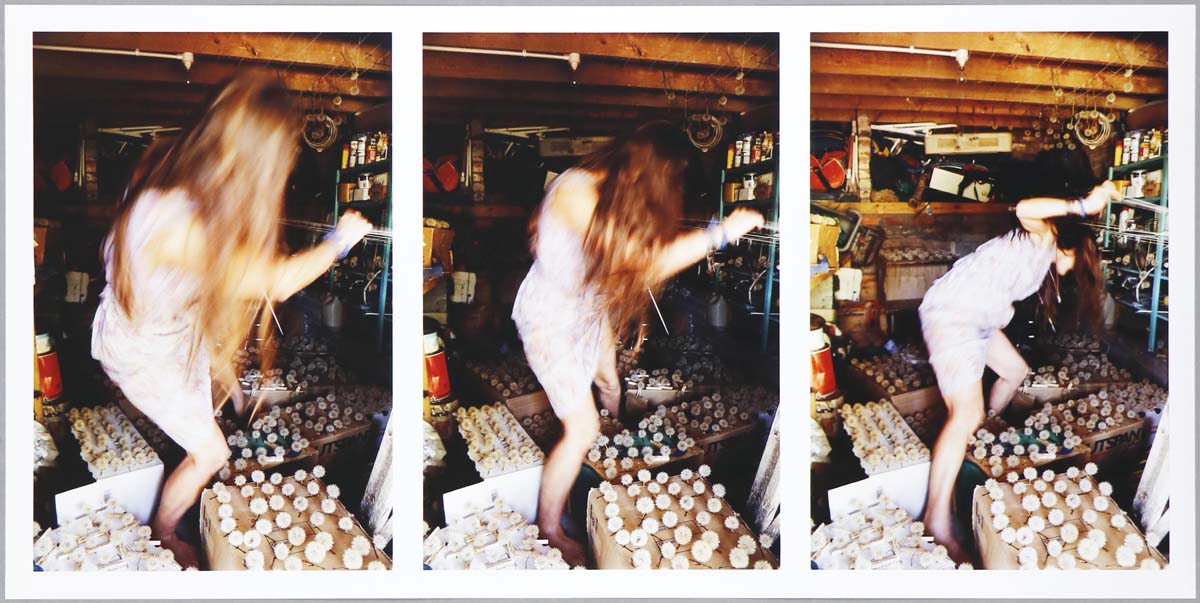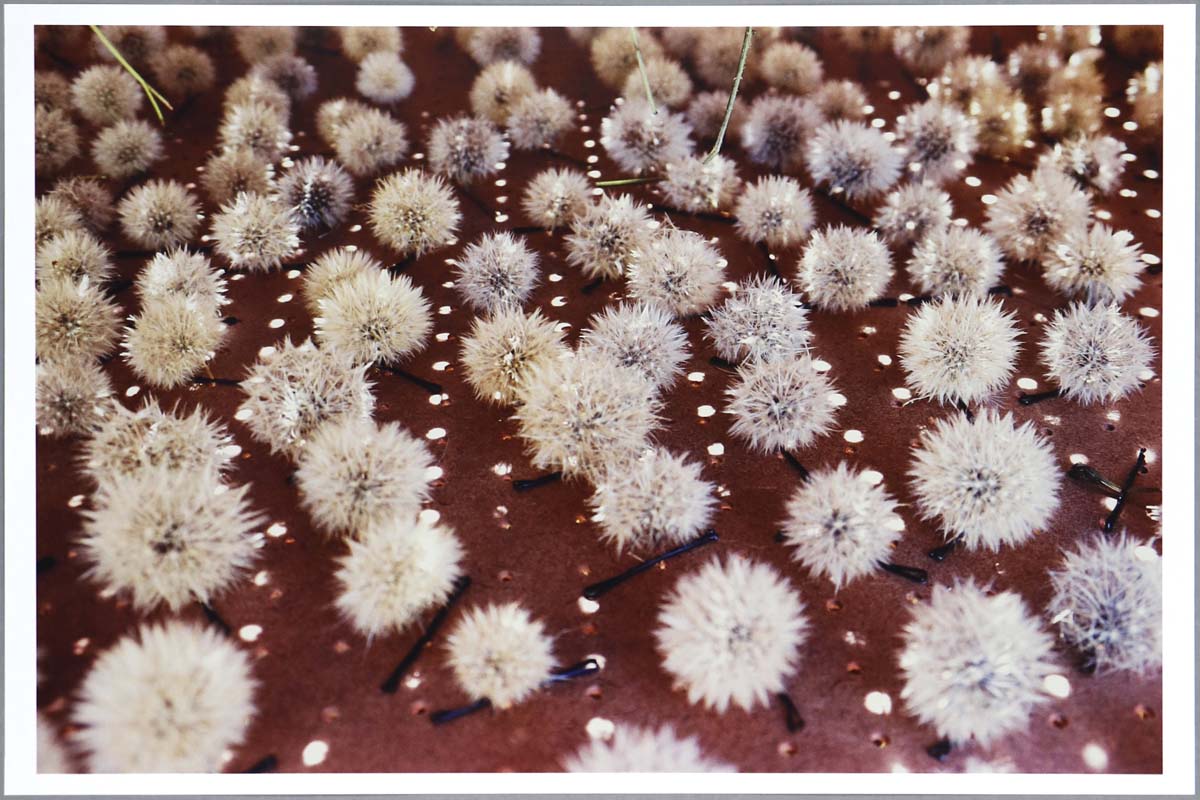Analysing objects and space through a lens of contradictions,
Michel Francois’ has a refined and unique view of reality. An installation of a noisy, chaotic and stressful office space questions the balance between work and leisure; and calm glass cases of growing nettles and dandelions invites the public to consider social structures of freedom and captivity. The artist’s philosophical works - often presented as sizable installations that include sculpture, video and photography - are investigative, allowing them to have a voice about society. Two photographic works from 1999,
J. Aux Pissenlits and
Transport de Pissenlits, were part of Francois’ solo show ‘Manure, Nettels and Dandelions’.
There was a certain element of surprise when Belgian painter, René Magritte, presented his painting ‘Ceci n’est pas une pipe’, or ‘This is not a pipe‘, at a gallery exhibition in France in 1929. On a light brown backdrop, the Belgian artist had painted a flawless brown polished-wood pipe with the title underneath. Here it was, a clear representation of a pipe - and then absurdly claiming it was not. To anyone who challenged Magritte for his obvious madness he would always reply “Can you stuff my pipe?”. Magritte’s work visualised the mantra of the surrealist’s revolution of the twentieth century: to make a statement with a philosophical purpose of raising questions about our perceptions and surroundings.
Sharing some of the Surrealists philosophical themes of questioning the world around us, the works by Francois are more spatial and complex, using numerous objects in his installations to create a space of reflection and self-awareness. Many of the artist’s installations may seem bizarre and contradictory at first: a pay phone booth with a pile of old useless change next to it; a papier-mâché punching bag; or plaster casts of the inside of the pockets in his trousers to see what it looks like. However, it is such curiosity and peculiar view of reality that stops the viewer in his or her tracks to consider how objects and actions relate to each other - and how many everyday social constructions are formed without any meaningful reflection.

MICHEL FRANCOIS
J Aux Pissenlits, 1999
Edition of 200
82(w) x 39(h) cm
32.28(w) x 15.35(h) inches

MICHEL FRANCOIS
J Aux Pissenlits, 1999
Edition of 200
82(w) x 39(h) cm
32.28(w) x 15.35(h) inches
|
|
|
82(w) x 39(h) cm
32.28(w) x 15.35(h) inches
|
Chromogenic print
Signed and numbered on verso.
Only 25 printed of the edition of 200.
Edition of 200
|
|
The installation ‘Bureau Augmenté’ (‘Expanded Office’), exhibited in Paris, Berlin and Musée de Charleroi in the late nineties, brought together many of Francois’ themes and disciplines of sculpture, space and social constructs. Inside a room the artist assembled a chaotic office filled with ringing toy telephones, fax machines, bright computer monitors and flickering fluorescent lights; loose wires were hanging from the ceiling; letters fixed to the walls; and paper, days-old newspapers and expired coins were piled and scattered on the floor. In short, the corporate office of nightmares. To an artist who rarely set foot in a real office, and never enjoyed the collegial gossip at the watercooler, it is easy to understand Francois’ rejection of corporate life and work, a part of many people’s lives. Nevertheless, the amplification of all its parts and the depersonalised presentation gets the message past the viewer’s initial disbelief, asking an important question: are people in charge of the office, or are the office managing people?
Far away from normal office, but not far from bureaucracy, was an earlier work: ‘Manure, Nettels and Dandelions’ (original title ‘Mest, Brandnetels en Paardebloemen’) - a project for a permanent installation at the De Kivelanden Detention Clinic in Rotterdam, Netherlands. In the centre the artist organised a collaboration with the inmates, inviting them to exhibit objects in a display case created by Francois. The items - something they had made or something belonging to them - were anything from the centre’s daily regimen, personal letters, photos, a dried dandelion, or a post-it note from one prisoner saying “Nothing is more clear than a closed door” . At the end of the collaboration which lasted over a year, Francois decided in 1997 to make a ‘documentary’ version of his involvement for the Witte de With gallery in Rotterdam. This version, more adapted to art-goers, consisted of objects, images and manifestations of the artist’s experience of working with the prisoners.

MICHEL FRANCOIS
Transport de Pissenlits, 1999
Edition of 200
81(w) x 54(h) cm
31.89(w) x 21.26(h) inches

MICHEL FRANCOIS
Transport de Pissenlits, 1999
Edition of 200
81(w) x 54(h) cm
31.89(w) x 21.26(h) inches
|
|
|
81(w) x 54(h) cm
31.89(w) x 21.26(h) inches
|
Chromogenic print
Signed and numbered on verso.
Only 25 printed of the edition of 200.
Edition of 200
|
|
Related to Francois’ philosophical thoughts on work and play in ‘Bureau Augmenté’, the installation in Rotterdam reveals Francois’ reflections on freedom and captivity. Apart from the 1:1 floor plan of a cell outlined on the gallery floor and other pieces exhibited, a thought-provoking part of the exhibition included a few glass cases containing cultivated dandelions, also known as ‘Pissenlits’ in French. Inside, the dandelions were carefully placed in individual grow pots, socially distanced to others - and on the outside of the vitrine, a clear instruction was affixed describing how and when to water them. These plants - considered weeds and normally overlooked - served as a symbolic reminder of a part of society that is kept nurtured yet restricted in their growth, while at the same time commenting on rehabilitation and transformation.
Being a thinker and an artist, Francois has a philosopher’s privilege to ask questions without an obligation of coming up with any answers. For the same reason, none of the works and installations are an attempt to be moralistic and does not present solutions to political issues.
Francois observes the world, create visual reports, and exhibits his findings. The thoughts and emotions, inward-looking scrutiny, and unsolved dilemmas in society, he leaves to the spectator. <
The artist’s mixture of techniques and media - covering installation, video, sculpture and photography - have been widely exhibited since his debut in Bruxelles in 1980. After
Michel Francois’ first museum show in 1989, more than one hundred solo shows followed as well as several inclusions in group exhibitions and events in the art calendar. In 1999, the artist was selected for the Belgian Pavilion at the 48th Venice Biennale. Francois lives and works in Bruxelles, Belgium.
J. Aux Pissenlits and
Transport de Pissenlits, representing a part of
Michel Francois collaborative project ‘Manure, Nettels and Dandelions’ (1997), were released as Chromogenic editions in a collaboration between the artist and Eyestorm in 1999. Each photographic edition of 200, of which only 25 were printed, are signed and numbered by the artist on verso.
You can find the two photographic editions and see them in more details on
Michel Francois’s artist page
here.